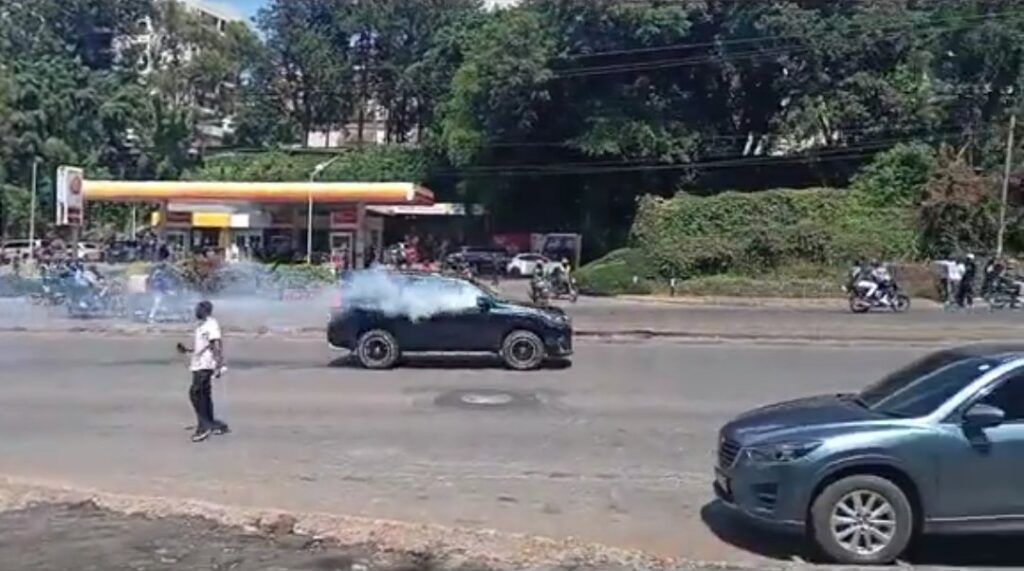The incident occurred during a tumultuous period of nationwide protests against the recently proposed finance bill. As the driver navigated a typically busy highway, he found himself caught in the chaos.
The demonstrators, fueled by anger and frustration, had taken to the streets in large numbers, blocking major routes and disrupting traffic flow.
Law enforcement agencies, in their efforts to regain control, resorted to using teargas to disperse the crowd. Unfortunately, the driver, along with many others, was inadvertently affected by the teargas, leading to a perilous situation on the highway.
The sudden exposure to teargas caused an immediate reaction; his eyes started to burn, and he struggled to see clearly.
His lungs felt like they were on fire as he gasped for air, trying to maintain control of the vehicle. Panic set in as he realized the potential dangers of losing control at high speed.
The driver’s immediate instinct was to pull over to the side of the road, but the highway was already in disarray, with other vehicles swerving and stopping abruptly due to the same predicament.
In the aftermath, the driver’s experience highlighted the broader implications of the protests and the government’s response.
Many commuters found themselves trapped in similar situations, raising questions about the safety measures in place during such demonstrations.
The incident sparked a public outcry, with citizens demanding better strategies for handling protests without endangering innocent bystanders.
Advocacy groups called for a thorough investigation and a reevaluation of crowd control methods, emphasizing the need for protecting public safety while respecting the right to protest.
The driver’s ordeal was a stark reminder of the complexities involved in managing large-scale protests. It underscored the need for a balanced approach that safeguards the public while addressing the grievances of the protesters.
As the debate over the finance bill continued, the incident became a symbol of the broader struggle between governmental authority and public dissent, prompting ongoing discussions about civil liberties and state responsibility.


